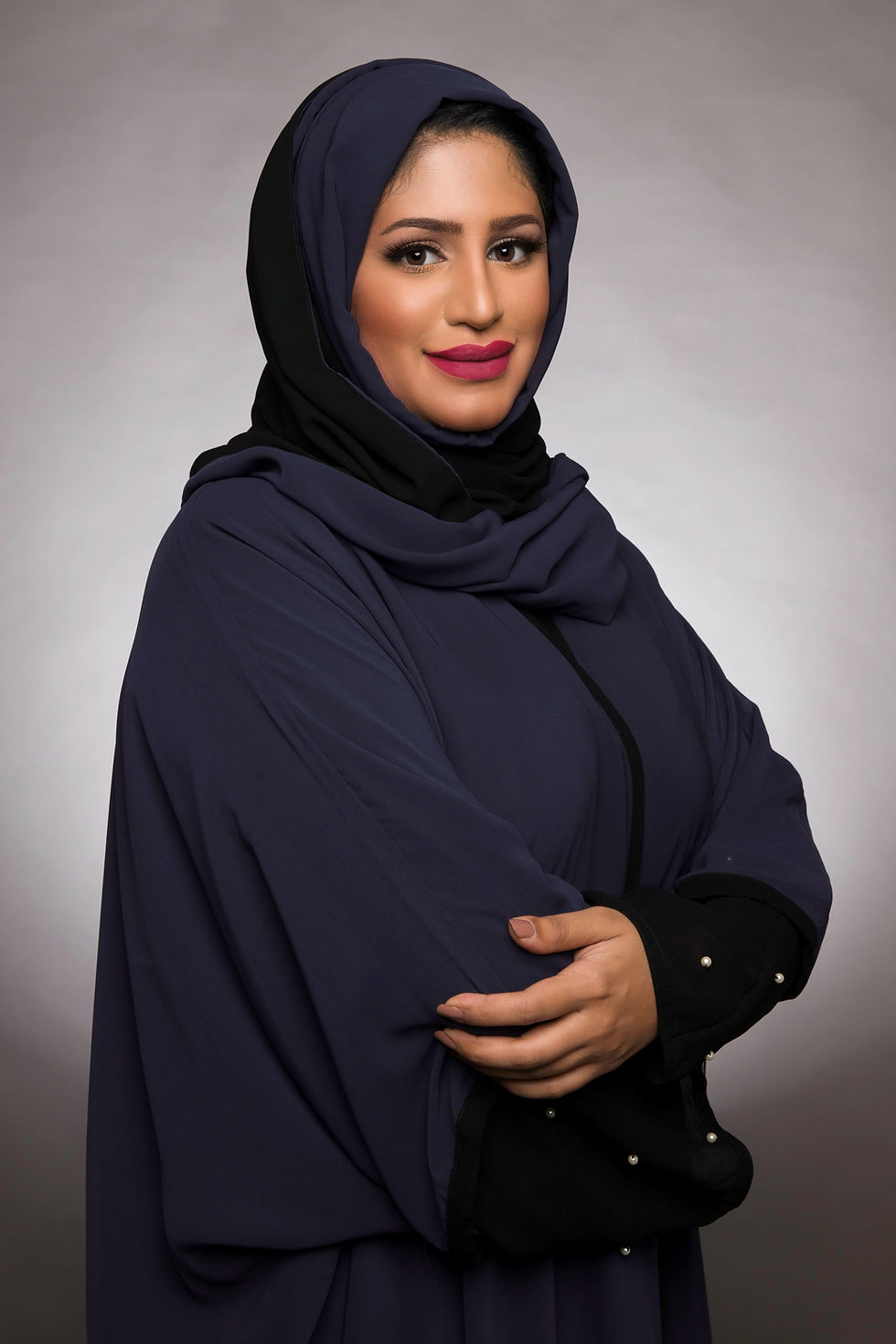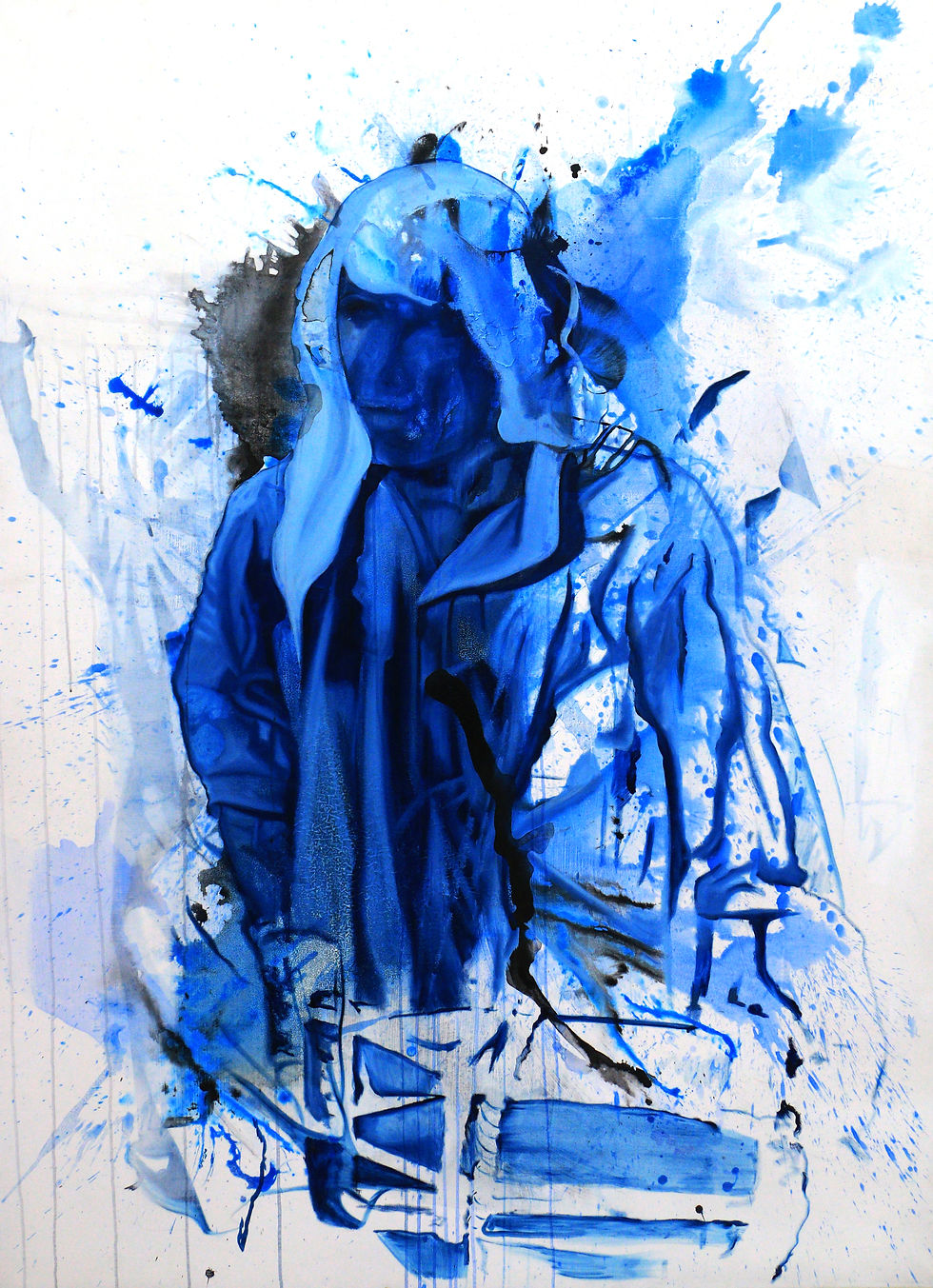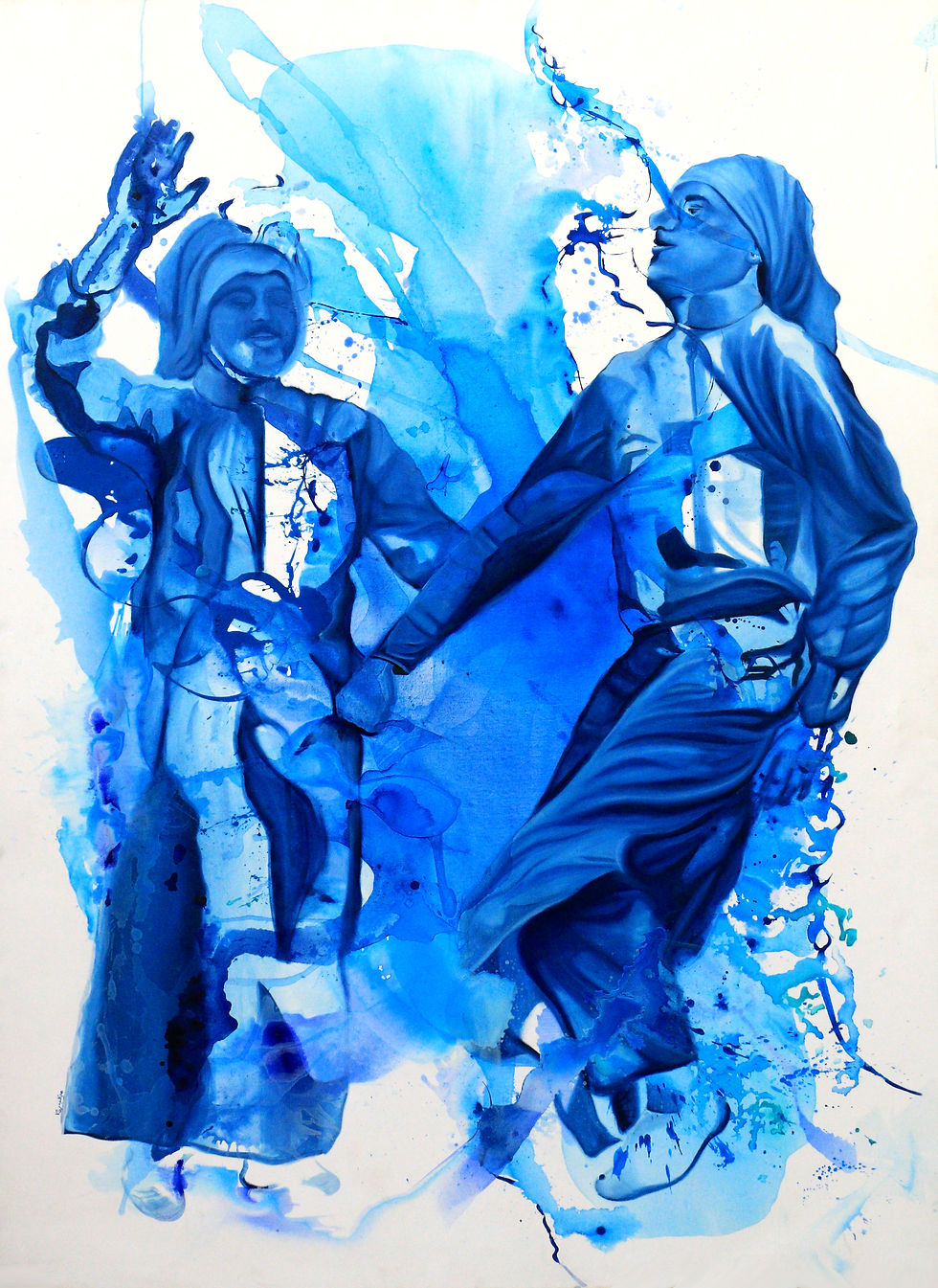An Artist of Blue: An Interview with Muna Al-Bader
- Dunes Team

- Mar 19, 2021
- 4 min read

An artist, entrepreneur, IT engineer, business analyst, and most importantly, Qatar’s art ambassador at UNESCO in the ResiliArt Talk, Muna Al-Bader is truly a woman of many talents. Her detail-intensive paintings and astounding art pieces have become nationally and regionally recognized for brilliantly adopting varying shades of blue in a contemporary way. Her paintings have been shown at many solo exhibitions in Qatar, including the Dan Danah Exhibition, the youth creative art center, and the Arab youth forum.
As a leading inspiration for many Arab and Qatari women, Muna Al-Bader has granted Dunes Magazine an in-depth interview, where she speaks about her artworks and deep connection with all hues of blue. She also reveals more secrets about her first painting and the one person who inspired her the most.
1. How did you discover your passion for painting, and what was your first experience?
My passion and affection for arts started very young, specifically in my art classes at school.
However, after graduating from high school and becoming employed, I found that I had a lot of free time that I wanted to invest in a good way. With that in mind, I decided to enroll in an art class where I received so much praise from others for my works and discovered that in fact I had some hidden talent!

2. What was your first painting, and at what age?
I created my first painting when I was seven years old. It was mainly about baking pieces of bread in an old-fashioned way.
3. What or who inspires you the most?
I always take my inspiration from my surrounding environment, traditions, and folk celebrations. My father has always been my biggest inspiration in life. Growing up, my father taught me many valuable lessons. I used to listen to his stories as he lived on the east side of Doha, where the Qatar national museum is now located. This area used to be called Fereij Sharq.
4. Do you agree or disagree with the statement: Art is a talent and not a skill to be taught?
I disagree with that. Every child is an artist. However, by developing this God-given talent, the child can learn how to paint and draw. I believe if the talent is there, it will add additional creativity to your canvas, but it doesn’t matter if it isn’t there. We are only human, so we can learn anything in life as long as the passion is there.

5. What are your ambitions in life?
There is no limit to my ambition. I always set goals and work hard to achieve them. When I finish one goal, I set another, especially in the fields of education and art. My mission is to deliver a message: to portray the beauty of our heritage through art so that others will know more about our culture. Art is a universal language, albeit visual, understood by all nations and cultures.
I have worked so hard to get a good education. I started it all with a diploma, then ended up with a master’s degree, and now I am doing my Ph.D.
6. Name three of your favorite paintings.
Yamal 1, Yamal 2, and Jrahan are my favorites. These three paintings were the first pieces painted during my blue color era. Through these paintings, I have reflected on 10 years of my art experience.
7. If you could bring one painter back to life, whom would you choose and why?
I would choose Picasso. He is an artistic legend. His life was very inspirational for me. He was just an ordinary painter when he was alive, but after his death, people started to recognize him and his paintings. His paintings are now worth millions of dollars. I have carefully studied his paintings and understand how he reflected his feelings and emotions through art.

8. Which country would you choose as a destination for art lovers and why?
I would choose the USA and UK due to the huge number of art galleries and museums there. I have traveled to these countries many times, just to visit their art museums and attend some art events. In fact, I learn a lot from other artists’ experiences in different countries around the world.
9. Why the color blue, and what does it mean to you?
The color blue has always been associated with nature. Wars erupted because of our ancestors’ need to be near nature. Nevertheless, the word “blue” has never been mentioned across the ages, despite its critical importance. Decades ago, our grandparents used to be exposed to the clear skies and blue sea. They had remarkable survival skills, perhaps due to the presence of the “blue” in their lives.
I believe there is a link between the color blue and human emotions, happiness, and sadness. Whenever I see them on gestures or postures of the human movement spectrum, I reflect them in my paintings. Overall, the color blue represents harmony, happiness, and vivacity.
10. When did you become an art ambassador, and what is the benefit of this role?
Since 2018, I have been actively working as Qatar’s art ambassador to UNESCO in the ResiliArt Talk. This selection came as a result of achieving many milestones in the field, not only on a personal level, but also for other artists through running different art-related events and discovering new artists. This role has given me more responsibilities toward other artists, and also toward my country.

11. How do you balance work and art?
Good time management helps me balance work and art. In the morning, I have a regular job, and in the evening I do my art thing. I achieve this balance by prioritizing my tasks based on their deadline and importance.
12. Where do you see art in the state of Qatar?
Qatar has been well recognized internationally in the art sector, especially thanks to the personal attention of Her Excellency Sheikha Al-Mayassa bint Hamad Al-Thani. She is well known in the art world, locally and across the globe. Nowadays, it’s very hard to walk around Doha without seeing a piece of public art. Similarly, the governmental buildings are full of paintings.
13. What would be the one piece of advice you can give to talented young painters?
I always say to young artists that they need to learn, and try everything in order to have their own unique style of art. This won’t come without trials and failures, though!






Comments